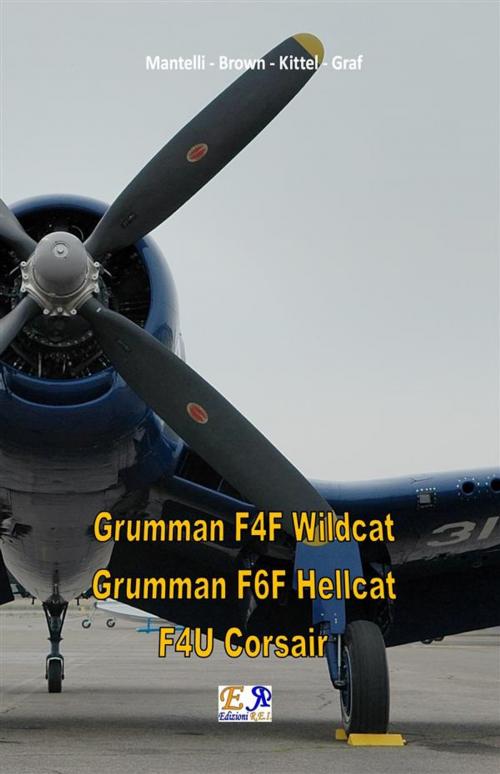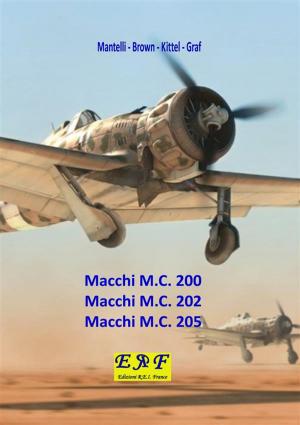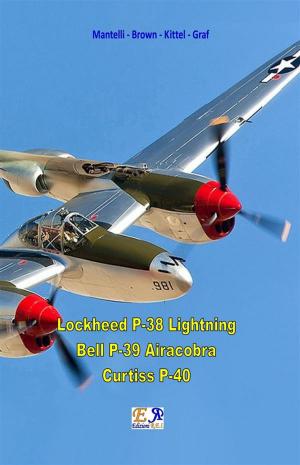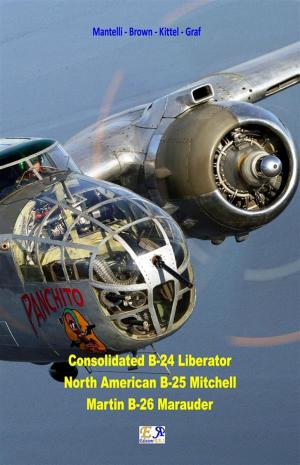Grumman F4F Wildcat - Grumman F6F Hellcat - F4U Corsair
Nonfiction, History, Military, Aviation, World War II| Author: | Mantelli - Brown - Kittel - Graf | ISBN: | 9782372973236 |
| Publisher: | Edizioni R.E.I. | Publication: | February 18, 2017 |
| Imprint: | Language: | English |
| Author: | Mantelli - Brown - Kittel - Graf |
| ISBN: | 9782372973236 |
| Publisher: | Edizioni R.E.I. |
| Publication: | February 18, 2017 |
| Imprint: | |
| Language: | English |
The Grumman F4F Wildcat was a single-engine fighter embarked to media wing developed by the US Air Force Grumman Aircraft Engineering Corporation in the late thirties; produced between the end of the decade to the early forties was the main fighter, usually embarked on aircraft carriers, the United States Navy during 1941 and 1942, ie in the first year of participation in the Second World War and successor, as well as downward, the F3F, last of the US fighter biplanes Navy and Air Force of the entire United States of America.
The Grumman F6F Hellcat was quickly developed as a standard fighter of the US Navy in World War II, he went into service in 1943 and remains the most important aircraft of the US Navy until the end of the conflict. Was the direct descendant of the F4F Wildcat of which, according to forecasts, it had to be a valid replacement for the Navy aircraft carrier in order to better combat the way to the Japanese fighters. According to statistics gathered by the Defense, 75% of enemy planes shot down by American aircraft operating from aircraft carriers in all theaters of war is to be credited all'Hellcat. In addition to the 4,947 Japanese and German equipment culled from F6F operating from aircraft carriers, the Hellcat which started from bases on land destroyed 209 enemy aircraft, bringing the total number of victories in all the world the military sector in 5156.
The Vought F4U Corsair was undoubtedly the best fighter of World War II based on aircraft carriers. It was extremely powerful and as fighter-bomber was so effective against the Japanese that they nicknamed him the "whooshing" death. As plane of tactical support, he was afraid even to "hear" his wing radiators produced a hiss worthy of a Stuka, and the Japanese soon became very respectful of their presence.
The Grumman F4F Wildcat was a single-engine fighter embarked to media wing developed by the US Air Force Grumman Aircraft Engineering Corporation in the late thirties; produced between the end of the decade to the early forties was the main fighter, usually embarked on aircraft carriers, the United States Navy during 1941 and 1942, ie in the first year of participation in the Second World War and successor, as well as downward, the F3F, last of the US fighter biplanes Navy and Air Force of the entire United States of America.
The Grumman F6F Hellcat was quickly developed as a standard fighter of the US Navy in World War II, he went into service in 1943 and remains the most important aircraft of the US Navy until the end of the conflict. Was the direct descendant of the F4F Wildcat of which, according to forecasts, it had to be a valid replacement for the Navy aircraft carrier in order to better combat the way to the Japanese fighters. According to statistics gathered by the Defense, 75% of enemy planes shot down by American aircraft operating from aircraft carriers in all theaters of war is to be credited all'Hellcat. In addition to the 4,947 Japanese and German equipment culled from F6F operating from aircraft carriers, the Hellcat which started from bases on land destroyed 209 enemy aircraft, bringing the total number of victories in all the world the military sector in 5156.
The Vought F4U Corsair was undoubtedly the best fighter of World War II based on aircraft carriers. It was extremely powerful and as fighter-bomber was so effective against the Japanese that they nicknamed him the "whooshing" death. As plane of tactical support, he was afraid even to "hear" his wing radiators produced a hiss worthy of a Stuka, and the Japanese soon became very respectful of their presence.















